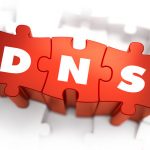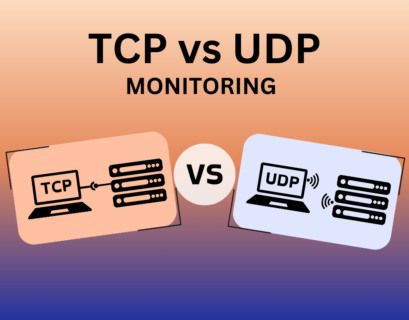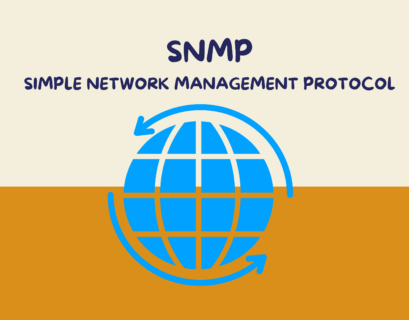SNMP Vulnerability is a hidden risk lurking in many network infrastructures. The Simple Network Management Protocol (SNMP) is a powerful tool for managing devices across networks, but if not properly secured, it can become an open door for SNMP attacks. Cybercriminals can exploit these weaknesses to access sensitive data, hijack network controls, or cause disruptions. Understanding and addressing these vulnerabilities is not just about securing devices – it’s about protecting the heart of your network from potential threats that could compromise everything. Let’s dive into how these risks work and what you can do to keep your systems safe.
Table of Contents
What is SNMP and why is it important?
Simple Network Management Protocol (SNMP) is a protocol used to manage and monitor devices on a network. Think of it as a language that allows network devices like routers, switches, servers, and printers to communicate with a central Network Management System (NMS). SNMP enables admins to check device health, retrieve performance metrics, and make configuration changes remotely.
At its core, SNMP allows the management of:
- Device status (e.g., whether it’s up or down)
- Network traffic (e.g., bandwidth usage)
- Error rates (e.g., failed packets)
- Configuration settings (e.g., IP addresses, routing tables)
Despite its usefulness, SNMP also comes with significant security challenges that need to be addressed, especially when using older versions or poor configurations.
Different versions of SNMP and their security vulnerabilities
SNMP has evolved over the years, with newer versions offering stronger security features. Here’s a quick breakdown of the key versions:
SNMPv1 (The Original)
The first version of SNMP, which has no encryption and relies on simple community strings (essentially passwords) for authentication. These community strings are transmitted in plaintext, making SNMPv1 highly vulnerable to interception.
SNMPv2 (Improvement, but Still Flawed)
SNMPv2 brought improvements in performance and some additional features but still retained the same weak security as SNMPv1. It introduced community-based security but still lacked encryption and strong authentication mechanisms.
SNMPv3 (The Secure Version)
The latest version, SNMPv3, addresses many of the security flaws of its predecessors. Key features include:
- Authentication: Verifies that requests come from a legitimate source.
- Encryption: Protects the data from being intercepted.
- Access Control: Allows better granularity on who can access what information.
While SNMPv3 is much more secure, older versions are still in use today due to compatibility issues or poor configuration practices.
5 Common security flaws in SNMP
Here are the most common SNMP-related vulnerabilities that can put your network at risk:
1. Weak or Default Community Strings
In SNMPv1 and SNMPv2, the community string acts as a “password” for accessing device data. Commonly used default strings like “public” or “private” are often left unchanged, making them easy targets for attackers. Since these strings are transmitted in plaintext, anyone with access to the network can intercept them.
2. Lack of Encryption
Older versions of SNMP (v1 and v2) do not encrypt traffic, which means that anyone who can intercept packets can read sensitive data, including configuration settings and credentials.
3. Misconfigured SNMP Services
Improper configuration of SNMP services can expose critical network information to unauthorized parties. For example, if SNMP is left open to the public internet or not restricted to trusted IP addresses, attackers can query sensitive information such as routing tables, device settings, and even system passwords.
4. Exploitation of SNMP Buffer Overflow Vulnerabilities
Certain SNMP agents, particularly those that haven’t been updated, can be vulnerable to buffer overflow attacks. Attackers can craft malicious SNMP packets that exceed buffer sizes, causing the system to crash or, worse, execute arbitrary code.
5. DDoS Amplification Attacks
An SNMP vulnerability frequently exploited in Distributed Denial of Service (DDoS) attacks is known as SNMP amplification attack. Attackers can send small, forged SNMP requests to devices that respond with large amounts of data, flooding the target with a massive volume of traffic and causing service disruptions.
Suggest article: What is a DDoS amplification attack?
How to detect SNMP Vulnerability: Penetration testing and tools
To identify potential SNMP vulnerability on your network, penetration testing (pen testing) is essential. Here’s how you can go about it:
- Use SNMP Scanners
There are specialized tools that can scan your network for SNMP vulnerabilities, detecting whether devices are exposed with default community strings or vulnerable SNMP versions.
- Check for Open SNMP Ports
You can use network scanners like Nmap to check if SNMP ports (UDP 161 and 162) are open and accessible. Devices with exposed SNMP services can be a significant security risk.
nmap -p 161 -sU -sV <target_ip>
- Review Configuration Files
Manually review the SNMP configuration files on your network devices. Ensure that only necessary devices have SNMP enabled and that SNMPv3 is in use with strong authentication and encryption settings.
- Test for Default Community Strings
Testing tools like SnmpCheck can help identify if devices are using default community strings like “public” or “private,” which can be easily exploited by attackers.
snmpcheck -r <target_ip> -c public
- Check for Amplification Vulnerabilities
Test if your devices are vulnerable to SNMP amplification attacks (DDoS) by sending spoofed SNMP requests to trigger large responses. This can be done using tools like Hping3.
hping3 –udp -p 161 –spoof <target_ip> <attack_ip>
Note that this will simulate an amplification attack by sending a small request and measuring the amplified response.
Suggested to read: DNS Spoofing (DNS poisoning) attack explained
What methods do attackers use to find SNMP weaknesses?
Attackers don’t need to guess where SNMP is running – they use automated tools and open-source intelligence (OSINT) to find targets quickly. Common discovery methods include:
- Network Sweeps: Tools like Nmap scan for open SNMP ports (UDP 161/162) across large IP ranges.
- Community String Guessing: Scripts brute-force weak or default community strings such as “public” or “private.”
- Shodan and Censys Searches: These search engines index internet-exposed SNMP services, making it trivial to identify vulnerable devices worldwide.
- Packet Sniffing: Since SNMPv1/v2c traffic is plaintext, attackers on the same network can capture community strings directly.
Once discovered, attackers can script mass exploitation to harvest sensitive information or launch DDoS amplification attacks. This underlines why limiting exposure and using SNMPv3 are non-negotiable in modern security practices.
Best ways to protect your network from SNMP Vulnerability
Here are some practical steps to secure SNMP and prevent potential attacks:
Switch to SNMPv3
Always use SNMPv3 for its robust security features, including encryption and authentication. This is the first and most critical step in securing your SNMP deployment.
Change Default Community Strings
Don’t just stick with the default community strings. Use strong, complex strings for both the read-only and read-write community settings.
Limit SNMP Access
- Use Access Control Lists (ACLs) to restrict SNMP queries to trusted IP addresses.
- Disable SNMP on devices that don’t require it to reduce your attack surface.
Encrypt SNMP Traffic
Even if you’re using SNMPv3, consider encrypting the traffic at the network level by implementing a VPN or IPsec for additional security.
Regular Updates and Patching
Ensure that all devices running SNMP are up-to-date with the latest patches and firmware updates. Understanding the difference between a hotfix vs bugfix can also help teams prioritize urgent security patches versus routine maintenance updates. Keeping your systems current helps close known vulnerabilities, including buffer overflow and amplification risks
Monitor SNMP Activity
Set up monitoring to track SNMP requests and responses. Tools like Snmpwalk can help administrators track SNMP traffic and identify unusual patterns, which could indicate an ongoing attack.
Conclusion
SNMP is an invaluable tool for network administrators, but its vulnerabilities – if left unaddressed – can pose significant risks. Weak community strings, lack of encryption, and amplification vulnerabilities make SNMP a potential target for attackers. By understanding these risks, regularly conducting penetration testing, and following best practices like upgrading to SNMPv3, restricting access, and using strong passwords, organizations can ensure their networks remain secure. Proper SNMP security is an essential part of maintaining a robust and resilient network infrastructure.






